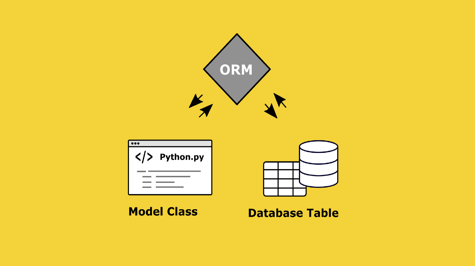Django is a powerful web framework for Python that allows developers to build complex web applications quickly and efficiently. One of the key features of Django is its ability to interact with databases using its Object-Relational Mapping (ORM) system, which makes it easy to perform complex queries on the database. In this guide, we'll walk through some examples of how to make complex queries in Django.
First, let's start with some basic terminology. In Django, a "model" is a Python class that represents a table in the database. Each instance of the class represents a row in the table. For example, if we had a database table called "books", we might define a Django model like this:
class Book(models.Model):
title = models.CharField(max_length=100)
author = models.CharField(max_length=50)
published_date = models.DateField()
This model has three fields: title, author, and published_date. The max_length argument specifies the maximum length of the field, and the DateField specifies that the published_date field should be stored as a date.
Now let's look at some examples of how to perform complex queries in Django.
1. Basic Filtering
The simplest type of query is a basic filter. This allows you to retrieve all rows from a table that match a certain condition. For example, let's say we want to retrieve all books that were published in the year 2020. We can do this with the following code:
books = Book.objects.filter(published_date__year=2020)
Here, we're using the filter method of the Book model to retrieve all rows where the published_date field has a year of 2020. The double underscore (__) syntax is used to specify the field we're filtering on (published_date) and the condition we're checking (year=2020).
2. Multiple Filters
You can also apply multiple filters to a query. For example, let's say we want to retrieve all books that were published in the year 2020 and have "Python" in the title. We can do this with the following code:
books = Book.objects.filter(published_date__year=2020, title__contains='Python')
Here, we're using the filter method again, but this time we're applying two filters: one for the published_date field and one for the title field. The contains method checks if the given string is contained within the title field.
3. Querying Related Objects
Django models can also define relationships between tables in the database. For example, we might have a separate table called "authors" that stores information about the authors of each book. We could define a separate model for this table like so:
class Author(models.Model):
name = models.CharField(max_length=50)
We can define a relationship between the Book model and the Author model like so:
class Book(models.Model):
title = models.CharField(max_length=100)
author = models.ForeignKey(Author, on_delete=models.CASCADE)
published_date = models.DateField()
Here, we're using a ForeignKey field to define a relationship between the Book model and the Author model. This means that each book has one author, and each author can have many books.
Now let's say we want to retrieve all books written by a particular author. We can do this with the following code:
books = Book.objects.filter(author__name='Jane Doe')
Here, we're using the filter method again, but this time we're filtering on the author field, which is a foreign key relationship to the Author model. The double underscore syntax is used to navigate the relationship and specify the condition we're checking (name='Jane Doe').
4. Querying Across Relationships
We can also query across multiple related tables in the database. For example, let's say we want to retrieve all books written by Jane Doe that were published in the year 2020. We can do this with the following code:
books = Book.objects.filter(author__name='Jane Doe', published_date__year=2020)
Here, we're combining the previous two examples to apply filters to both the author field and the published_date field. Note that we're using the same double underscore syntax to navigate the foreign key relationship.
5. Querying with Q Objects
Sometimes we need to perform more complex queries that involve multiple conditions. In these cases, we can use Q objects to create complex queries. For example, let's say we want to retrieve all books written by Jane Doe or John Smith that were published in the year 2020. We can do this with the following code:
from django.db.models import Q
books = Book.objects.filter(Q(author__name='Jane Doe') | Q(author__name='John Smith'), published_date__year=2020)
Here, we're using the Q object to combine multiple conditions with an OR operator (|). Note that each condition is enclosed in its own Q object, and the double underscore syntax is used to navigate the foreign key relationship.
6. Querying with Aggregates
Django also provides a variety of aggregate functions that allow us to perform calculations on groups of rows. For example, let's say we want to count the number of books written by each author. We can do this with the following code:
from django.db.models import Count
authors = Author.objects.annotate(num_books=Count('book'))
Here, we're using the annotate method to add a new field to the Author model that counts the number of related Book objects. The Count function takes the name of the related model ('book') as its argument.
7. Querying with Subqueries
Sometimes we need to perform queries that involve subqueries or nested queries. Django supports this type of query using the Subquery function. For example, let's say we want to retrieve all authors who have written a book that was published in the year 2020. We can do this with the following code:
from django.db.models import Subquery, OuterRef
subquery = Book.objects.filter(author=OuterRef('pk'), published_date__year=2020).exists()
authors = Author.objects.filter(subquery)
Here, we're using the Subquery function to perform a subquery that filters Book objects by author and published date. The OuterRef function is used to reference the pk field of the outer query (i.e., the Author model). Finally, we're using the exists method to check if there are any related Book objects that match the subquery condition. We then use this subquery in a filter on the Author model to retrieve all authors who have written a book published in the year 2020.
8. Querying with Prefetch Related
In some cases, you may want to retrieve related objects along with the main query to minimize database hits. The prefetch_related method allows you to do this by fetching related objects in a separate query, which can significantly reduce the number of database hits required to retrieve all the related objects. For example, let's say we want to retrieve all authors along with their books, and we want to minimize the number of database hits. We can do this with the following code:
authors = Author.objects.prefetch_related('book_set').all()
Here, we're using the prefetch_related method to fetch all the related Book objects for each Author object in a separate query. This will minimize the number of database hits required to retrieve all the related Book objects.
9. Querying with Raw SQL
While Django provides a powerful ORM system for querying databases, there may be cases where you need to execute raw SQL queries for more complex operations. Django allows you to execute raw SQL queries using the raw method. For example, let's say we want to execute a raw SQL query to retrieve all authors along with the number of books they've written. We can do this with the following code:
from django.db import connection
with connection.cursor() as cursor:
cursor.execute('SELECT author.id, author.name, COUNT(book.id) AS num_books FROM author LEFT JOIN book ON author.id = book.author_id GROUP BY author.id')
rows = cursor.fetchall()
Here, we're using the connection object to get a cursor and execute a raw SQL query that joins the Author and Book tables and groups the results by author. We then fetch all the rows returned by the query.
Conclusion
In this guide, we've covered some of the many ways you can perform complex queries in Django. Whether you need to perform simple filtering or complex queries with subqueries and aggregates, Django provides a powerful and flexible ORM system that can help you efficiently retrieve the data you need from your database. By taking advantage of the various query methods, functions, and optimizations available in Django, you can build fast, scalable, and maintainable web applications that provide your users with the best possible experience.









